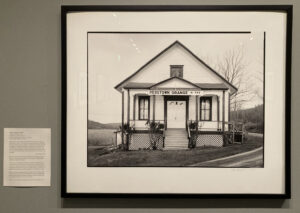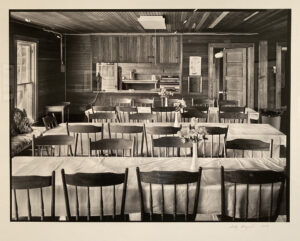






Last year, we noted that Plowline: Images of Rural New York (“Plowline”), a comprehensive photography collection initiated in 2010 by the Farmers’ Museum in Cooperstown (Otsego County) in upstate New York had grown to a remarkable 17,500 images. The Farmers’ Museum has put together a ten-minute mini-documentary Cultivating the Character of Rural New York that uses images from this remarkable photography collection and is vivid evidence of how valuable this initiative is for understanding the rural American heritage.
The goal of the Farmers’ Museum is to make available an improved data system that will include an accessible website presence for its entire Plowline photography collection, with donations welcome to support this goal.
As new collections of photographs are acquired by the Farmers’ Museum for its Plowline, the museum often issues a blog post. For example, last year, two extensive collections of photos were purchased by the museum, while an additional three collections were the gifts of generous donors, as spotlighted in our July 29, 2021 post.
In 2011, soon after the Plowline collection was initiated, Christina Ely, the then Registrar for Plowline, wrote a wonderful blog post about the “newest collection of photographs” that had been added, by Cooperstown-area based photographer Andrew Baugnet, which captured “views of nine Grange Halls in Otsego County.”
Christina Ely wrote that she would often drive past “an old, closed, decaying Grange Hall that stood like a ghost near the center of the village” where she grew up in upstate New York. She would later learn “what that building stood for and the importance of the Grange within the community, especially in the late 19th and early 20th century.”
The Arkell Museum in Canojoharie (Montgomery County) in the Mohawk Valley of upstate New York, located just a few blocks off Exit 29 of I-90 (the New York State Thruway) is a wonderful destination, especially this summer 2022 with its current exhibit New York State Grange Photographs by Andrew Baugnet.
Photographer Andrew Baugnet became fascinated by New York State Grange buildings after following signs advertising a chicken dinner. Included in the 14 large-scale back and white photographs in the exhibit at the Arkell Museum is a perfectly composed photograph of the Pierstown Grange No. 793 in Cooperstown (Otsego County), which was the site for a chicken barbeque. While driving on the back roads of Otsego County, he saw the building on the edge of a cornfield at a bend in the country road. He writes “As I walked through the front door, I felt I had been swept back in time as the old wooden steps creaked, and the tables were set with china plates and silverware.”
Since then, Baugnet has spent much of his career photographing Grange buildings across the state while documenting historic architecture and the built environment. The museum’s exhibit of his 14 black and white photographs is a visual treat worth savoring, and the labels describing each photograph are extraordinarily detailed and require the visitor to slow down and read carefully. In this way, the rural agricultural past of upstate New York becomes stunningly real.
The photograph of the Dining Hall at Star Grange No. 9 in Hounsfield (Jefferson County) just east of Lake Ontario, and once renowned for flourishing dairy farms and prosperous cheese factories, reminded a former Grange member of ham suppers of the past. This photograph’s label explains the importance of the Dining Hall at a Grange:
“Images of dining halls, dishes and silverware often recall huge community meals . . . . These meals often serve as fundraisers, but they were important ways for rural families to gather, enjoy each other’s company, and share favorite dishes. Most granges could serve one hundred people or more in a single sitting.”
The photograph of a New York State Grange Banner from the Colonial Harper Grange No. 1508 in Harpersfield in Delaware County (the largest and most western of the four counties in the Catskill Mountains), depicts four buildings important to the Grange movement, formally known as the National Grange of the Order of Patrons of Husbandry, created in 1867 “to connect farmers socially and economically” according to the detailed label for this photograph.
The four buildings depicted in the banner are (i) the State Fair Grange building, located on the New York State fairgrounds in Syracuse (Onondaga County), (ii) the State Grange Headquarters located in Cortland, (Cortland County); (iii) the Fredonia Grange, the first New York State Grange located in Fredonia (Chautauqua County); and (4) the National Grange building located in Washington, DC, dedicated in 1960 as a non-governmental headquarters for agricultural and rural families.
A photograph that stopped this visitor in his tracks was the Presentation Box of Grange Tools from the Champion Grange No.18 in Carthage (Jefferson County) a village chartered in 1869 located next to Fort Drum and named after the historic city of Carthage in Tunisia. (Fort Drum, a U.S. Army military reservation consisting of 107,265 acres, in the 2010 census had a population of nearly 13,000 and is home to the 10th Mountain Division).
This photograph’s informative and detailed label notes that “Traditional Grange practices rely on symbols, rituals and secrecy, especially during the involved initiation ceremonies.” New members received a presentation box of Grange Tools.
Also included in the label for this photograph is an extraordinary explanation, rooted in traditional Biblical values, from the Maine State Grange for the various 19th century agricultural tools depicted:
“The axe, the plow, the harrow and the spade are used in the preparation of the soil in the spring, and teach us the lesson of faith. The hoe and the pruning knife teach us to keep our minds and thoughts on the pure and honorable. The sickle is used to gather the good crop, so that we might from our abundance dispense charity to the needy. The agate is hard and firm, a lasting example of faithfulness, and fidelity.”
Perhaps the most beautiful and artful photograph in the exhibit is Entranceway, Fly Creek Grange. The Fly Creek Grange which served three small Otsego County communities of Fly Creek, Oaksville and Toddsville is now the location of the Fly Creek Historical Society. Photographer Baugnet notes “Everything in the building is local wood, all built by local people.” This evocative photograph reminded this visitor of the clean and functional aesthetic of the Shakers.
Although this exhibit of Andrew Baugnet’s Grange photographs at the Arkell Museum this summer is a remembrance of things past, it is important to note that the National Grange remains an active on-going organization. Its members continue to this day giving thousands of hours to volunteer in their communities and raise millions of dollars for important causes. On its website, the National Grange emphasizes that “Grangers attend public meetings, inform themselves of local, state and national issues, and speak for the rights of all Americans, especially those who work in agriculture, producing our food, fuel and fiber.”
[New York State Grange Photographs by Andrew Baugnet (through August 21, 2022) at the Arkell Museum, 2 Erie Boulevard, Canajoharie, New York, 518.673.2314]
(Frank W. Barrie, 7/14/22)





